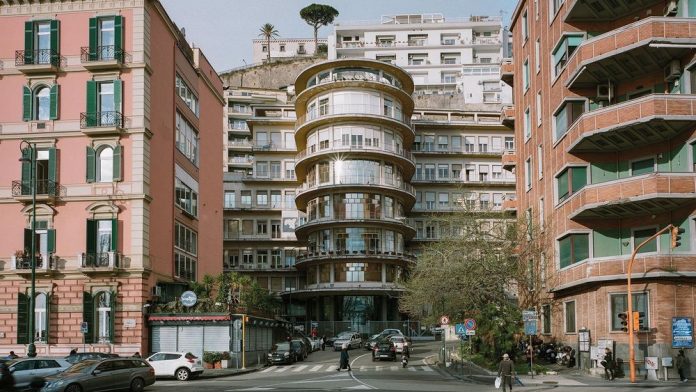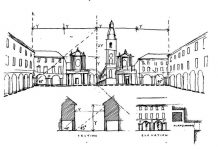Since modernism is considered here in a strictly defined national framework, little attention is paid to the cultural network of the dual Austro-Hungarian monarchy, and before that, the Habsburg Empire. Serbian architect Nikola Dragovic, who carried out most of his projects in Yugoslavia, but at the very first stage of his career worked in Prague, is not mentioned in the part of the book devoted to Czechoslovakia. The title of Lesnikovsky’s introductory article “Czechoslovak, Hungarian and Polish architecture in a European perspective” is characteristic of the accepted practice: Eastern Europe was not considered “part of Europe” at that time.
Defining connections over borders is one of the strengths of Akosh Moravansky in his publications such as “Competing Views. Aesthetic Invention and social imagination in Central European architecture, 1867-1918” and Die Emeuerung der Baukunst. Wege zur Modeme in Mitteleuropa 1900-1940 (“The Renewal of the Art of Construction. Back to the modernity of Central Europe”). The same would be fair to say about the book “The Formation of a new city. New Art Nouveau architecture in Central Europe 1890-1937. Vienna, Budapest, Prague, Krakow, Zagreb, Lviv, Ljubljana, Brno, Timisoara, Zlín” (ed. Eva Blau and Monica Platzer).
In this case, it makes sense to focus on cities, because with this approach, the authors get the opportunity to leave aside national issues and focus on the problems of architecture and urban design at the level at which they usually have to be solved, that is, at the city level. The same broad panorama and focus on individual cities as centers of cultural development can be found in the book “Art Design and Architecture in Central Europe 1890 — 1920” by Elizabeth Clegg.
These publications are exceptional because the main tendency is to prefer consideration of the structure of national history, which has been fashionable since the heyday of nationalism in the nineteenth century. Thus, a significant proportion of nineteenth-century European architecture was based on national histories, which were often published in a non-national language in order to make them accessible to an international reader. It usually happens that the national border is a geographical boundary for the reviews under consideration, where national and cultural, and often linguistic borders coincide.
In addition, there are many monographs devoted to the works of specific architects, individual cities, schools and style periods, many architectural guides to cities and regions. Even small municipalities, such as Braschat in the province of Antwerp, have their own architectural guides. There are two of them in the same Braschat: one for the period 1920-1940, the second for the period 1940-1975. Recent publications on, say, postmodernism in Serbia, the neo-avant-garde of the Tallinn School and post-war modern architecture in Slovakia prove that more and more new chapters gradually fit into the history of European architecture.
Together, these publications present a kaleidoscopic, fragmented picture of the diversity and richness of European architecture, which is sometimes — as in this book – understood as a collective name for all the countries that make up the European continent. Sometimes, however, this concept is used to distinguish between a specific country and something that is physically outside its borders, but culturally and geographically closely adjacent to it.
Obviously, “Europe” is a more specific designation than “world”. “The rest of the world” is a very vague designation, whether it is used in a European or global context, and it is rarely used as an indication of the source of new ways of development. Innovations and inventions, whether “Art Nouveau” or postmodernism, analyzed in many national histories, are not homegrown, they come from somewhere outside, and the speed of this process is a measure of the modernized national culture in comparison with the rest of Europe or the rest of the world.



















